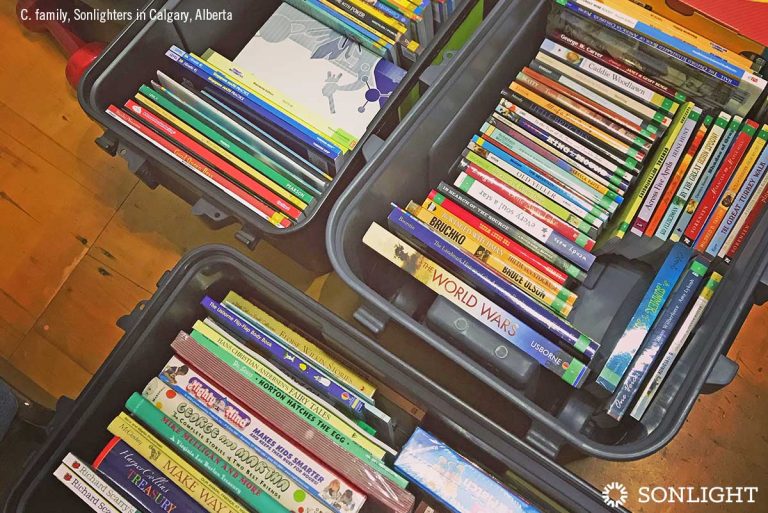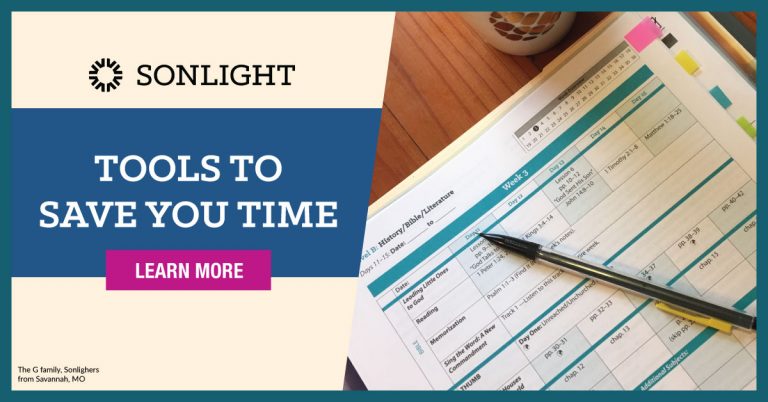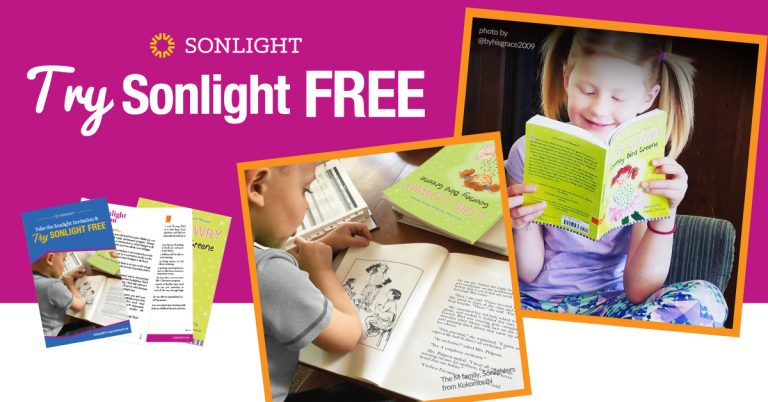
Do any of these descriptors apply to you in relation to homeschool curriculum?
- You sell curriculum and still have shelves brimming with books and resources?
- You frequently loan your not-in-use curriculum to friends?
- You often switch curriculum? And then switch again?
- You have a reputation of having tried every program under the sun?
- You sometimes mistakenly buy items you already own?
If so, you might be a homeschool curriculum junkie.
The Curriculum Junkie in Her Native Habitat
A curriculum junkie is a homeschool parent whose main hobby seems to be researching and collecting curriculum. Her shelves are lined with books, CDs, supplies, and manipulatives—much of it barely used. She will offer to loan you books to peruse, and sometimes will even admit that she has multiple copies.
This is the person who has already heard of the next new thing or can easily rattle off the pros and cons of all twelve math programs she has used over the past three years. She knows when every used sale in that area takes places, too, usually because she’s both a buyer and a seller. She’s a treasure trove of information and an unabashedly enthusiastic homeschooler.
The Pitfalls of Being a Curriculum Junkie
While some consider it a badge of honor to be a curriculum junkie, there are some decided downsides:
1. Expense
Buying curriculum is an expensive hobby. Even the cheapest resources add up when you are constantly on the hunt. Buying things that are a deal isn’t saving you any money if you already have something at home on the shelves that can get the same job done.
2. Inconsistency
There is no consistency or flow for children whose parents routinely revamp their methodology. Students who stop and start new curriculum throughout the year may never find a rhythm with their learning. Both of these are important parts of the learning process. Predictability can be bad, but more often than not, it’s actually quite good. Settling comfortably into a familiarity with how information is being presented lets kids focus on the content instead of the structure.
3. Energy Drain
All of the work of researching and hunting down curriculum diverts precious time and energy. As a homeschooling mom, you have a limited amount of your greatest resource: YOU! You probably have a hundred plates you have to keep spinning; it's no wonder you end up feeling pressured, pulled, and burned out. Why add another plate of curriculum hopping when the thing you’re pursuing is just another version of something you already have?
How to Say No to Homeschool Curriculum Overload
So how do you steer clear of the trap? How do you find what you need and stay on top of options, but not become the curator of your own curriculum museum?
1. Look to Trusted Sources
Ask for recommendations from friends whose learning styles are similar or whose homeschooling bent is aligned with yours. Consult the websites and catalogs of companies whose offerings have resonated with you in the past.
2. Don't Curriculum Shop as Recreation
Making a habit of perusing used sales pages or picking up odds and ends whenever the mood strikes doesn’t make financial sense. Find other ways to have a good time that will replenish your soul or improve your homeschool.
3. Recognize the Signs of Curriculum Distress
There are definitely times when you need to steer the homeschool curriculum ship in a new direction. But don’t fix what isn’t broken.
If your child is content and growing with the current science curriculum, don’t waste your time looking for something bigger, better, or newer. Be content with what you have! Look for the signs that things need to change as your cue to shop, not your own restlessness.
4. Allow Time for Curriculum to Work
One of the major pitfalls of being a curriculum junkie is the cycle of inconsistency it sets up for students. Bringing in a new piece of curriculum automatically comes with an adjustment period. Deciding a few weeks into a new program that it won’t work short circuits that normalization time. Don't reset the clock when it’s possible that the first one would have eventually worked out with a bit of patience.
5. Have a Long Range Homeschool Plan
Knowing your long-term goals helps you plot your course effectively. If you know that your son will cover chemistry in tenth grade, then there’s no reason to collect three other chemistry programs designed for middle schoolers when he’s in seventh grade. Avoiding senseless purchases isn’t just frugal, it’s good stewardship of your resources, your family, and your homeschool.
If you tend to curriculum hop or piece together programs from a wide variety of sources and are exhausted by the constant change, try Sonlight. It's complete and fully planned so you can stop the curriculum habit and settle on the one program that works.










well put